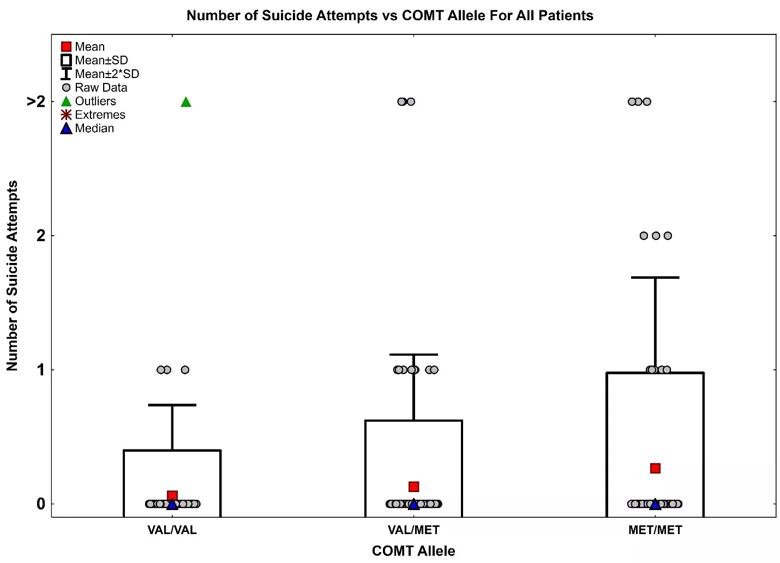Advertisement
Association of the COMT gene Val/Met polymorphism and suicidality in children and adolescents

In recent years, there has been an unfortunate and steep increase in suicide among children and adolescents in the United States.1 Suicidal behavior is a complex phenotype, with intricate interplay of environment and genetic predisposition. Catechol-o-methyltransferase (COMT) enzyme, encoded by COMT gene on chromosome 22q11.2, is critical for dopamine metabolism. Polymorphisms in COMT, especially the substitution of methionine (Met) for valine (Val) at codon 158 leads to one-fourth less enzymatic activity compared to the Val allele. Studies show that individuals homozygous for the Val allele have significantly lower synaptic dopamine levels.2
Advertisement
Cleveland Clinic is a non-profit academic medical center. Advertising on our site helps support our mission. We do not endorse non-Cleveland Clinic products or services. Policy
Previously, the role of COMT alleles in suicidal behavior has produced conflicting results. While some studies show that COMT polymorphism is associated with increased suicidal behavior,3-5 a meta-analysis of several studies did not find such correlation.6 Most studies thus far have analyzed adults with suicidal behavior.
Investigators at Cleveland Clinic Children’s recently conducted one of the largest studies in children and adolescents to investigate the role of COMT polymorphism (Val/Val, Val/Met, and Met/Met) in suicidal behavior. Led by Tatiana Falcone, MD, and Anjali Dagar, MD, the team analyzed 322 children and adolescents attending outpatient psychiatry clinics who underwent Genesight® testing, a pharmacogenomic test that analyzes clinically important genetic variations, as part of their clinical care. Close to 9% (n = 28) of participants reported at least one suicidal attempt, including 10 with multiple attempts. The researchers found a statistically significant difference in the mean number of suicide attempts between individuals with COMT Met/Met and COMT Val/Val alleles (P = 0.02; Figure 1).
These initial results in children and adolescents show the promise of early identification of individuals who may be more vulnerable to self-harm and suicidality. The investigators hope this ongoing study will shed more light on the role of genetics in suicidality among children and adolescents.

Figure 1: Number of suicide attempt in children and adolescents with various COMT alleles.
Advertisement
Advertisement

Multidisciplinary program helps budding clinicians explore the human dimensions of patient care and medical research

Program empowers Black stylists to provide emotional first aid

Positive emotions, low impulsivity appear to safeguard against weight gain, other comorbidities

Consultation service provides comprehensive care to patients with anxiety, PTSD, schizophrenia, and other high-risk disorders

Study shows a growing openness to the clinical potential of psychedelic treatments

Urine test strips and point-of-care testing may be key to slowing opioid epidemic

Study sheds light on how clinicians addressed their patients’ pain and insomnia during the pandemic

Recovery's in Reach provides treatment options, peer support to those struggling with alcohol and drug use